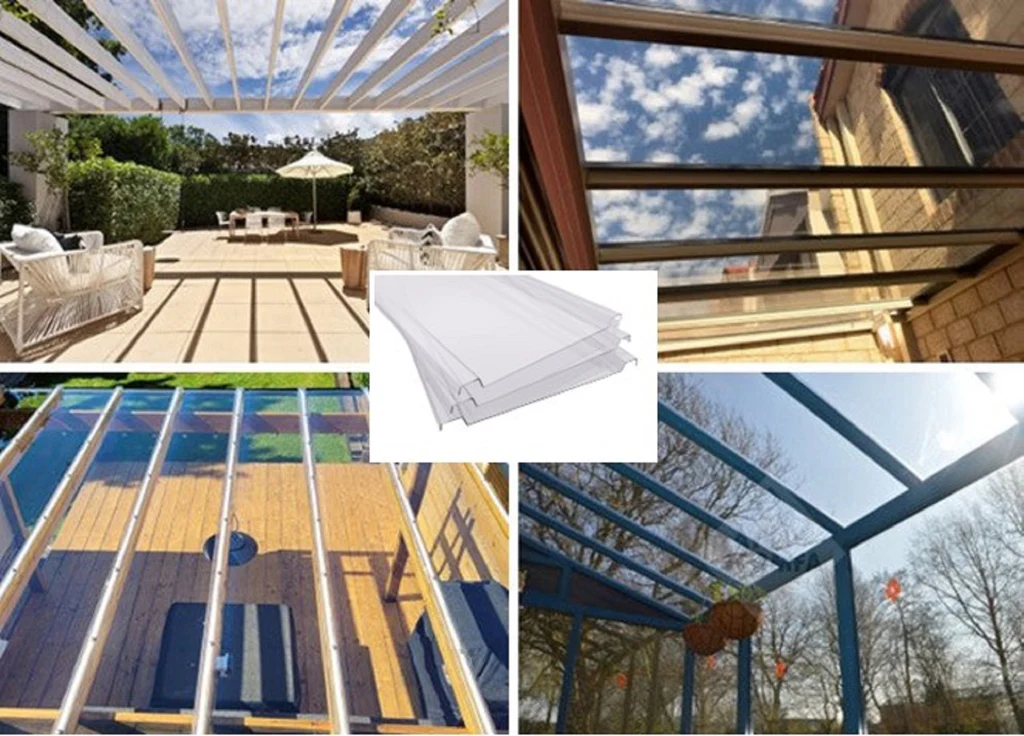Polycarbonate is a type of durable, transparent plastic known for its impressive strength and versatility. Developed in the late 1950s, polycarbonate has become a go-to material in various industries due to its unique properties. It’s made from a specific type of polymer, which gives it characteristics that make it suitable for applications where strength, transparency, and heat resistance are essential. Unlike regular plastic, polycarbonate can withstand significant impacts, making it less likely to shatter or break, which is why it is often used in safety applications. As technology and manufacturing processes have advanced, the use of polycarbonate has expanded, making it an integral material in everyday products, from eyewear lenses to construction materials.
Properties of Polycarbonate
Polycarbonate is prized for its remarkable properties. One of its most notable features is its high level of transparency, comparable to glass, allowing for excellent light transmission. This makes it a preferred choice for applications where visibility is crucial. Additionally, polycarbonate is highly impact-resistant, meaning it can endure strong forces without cracking or breaking. This property makes it an ideal choice for safety goggles, riot shields, and even bulletproof windows. Furthermore, polycarbonate is lightweight, making it easy to handle and install in various settings. It also exhibits good temperature resistance, maintaining its integrity across a wide range of temperatures, which is especially important in applications exposed to heat or cold.
Types of Polycarbonate
Polycarbonate comes in several forms, each designed for specific applications. Solid polycarbonate sheets are thick, durable, and provide excellent insulation and soundproofing, making them popular for architectural projects. These sheets are often used in skylights, greenhouses, and safety barriers. Polycarbonate films are thinner and flexible, often used for protective coatings or as a material for signage and displays. Multi-wall polycarbonate sheets are constructed with multiple layers, creating air pockets that enhance insulation properties. This type is frequently used in greenhouse construction, as it allows light to penetrate while providing excellent thermal insulation. Each type of polycarbonate serves unique functions, catering to different industry needs.
Common Uses of Polycarbonate
The applications of polycarbonate are vast and varied. In construction, it is used for roofing panels, skylights, and safety glazing because of its strength and transparency. In the automotive industry, polycarbonate is utilized for headlight lenses, offering clarity and impact resistance, which enhances vehicle safety. Additionally, polycarbonate is prevalent in electronics, where it is used for protective covers and components in devices like smartphones and laptops. Its lightweight nature makes it an ideal choice for portable electronic devices. Furthermore, in the realm of safety equipment, polycarbonate is used in eyewear, helmets, and protective shields, where its shatter-resistant qualities are critical for protecting users.
Advantages of Using Polycarbonate
There are numerous advantages to using polycarbonate in various applications. Its durability and strength mean that products made from Polycarbonate can withstand harsh conditions and last longer than those made from other materials. This longevity translates into cost savings for manufacturers and consumers alike. Additionally, polycarbonate is highly versatile, as it can be molded into various shapes and sizes, catering to a wide range of industries. Its energy efficiency and insulation properties also contribute to reduced heating and cooling costs in buildings, making it an environmentally friendly choice. Overall, polycarbonate stands out as a material that offers both performance and value.
Environmental Impact of Polycarbonate
When considering materials for various applications, it’s essential to assess their environmental impact. Polycarbonate is recyclable, which means that used products can be processed and transformed into new items, reducing waste. However, the production of polycarbonate does have an environmental footprint, and ongoing research aims to improve the sustainability of its manufacturing process. Compared to materials like glass, polycarbonate is lighter and requires less energy for transportation, which can lessen overall carbon emissions. While it’s not without its challenges, advancements in recycling technologies and sustainable production methods continue to enhance the eco-friendliness of polycarbonate.
Care and Maintenance of Polycarbonate Products
Proper care and maintenance are crucial for extending the lifespan of polycarbonate products. Cleaning should be done with mild soap and water, avoiding harsh chemicals that can scratch or damage the surface. It’s important to use a soft cloth for cleaning to prevent any abrasive marks. To minimize scratches, polycarbonate products should be stored carefully and handled with clean hands. Additionally, avoiding exposure to extreme temperatures can help maintain the material’s integrity. Regular inspection for signs of wear can also ensure that any potential issues are addressed early, preserving the functionality and appearance of polycarbonate items.
Future Trends in Polycarbonate Use
As technology evolves, so too does the potential for polycarbonate. Innovations in manufacturing processes are leading to improved properties, such as enhanced UV resistance and better thermal insulation. Researchers are exploring new applications for polycarbonate, particularly in the fields of renewable energy and smart technology. For instance, polycarbonate is being investigated for use in solar panels due to its lightweight and transparent qualities, which can enhance energy efficiency. As industries continue to seek sustainable and efficient materials, polycarbonate is poised to play a significant role in future innovations, ensuring its relevance in various sectors for years to come.
Conclusion
In summary, polycarbonate is a remarkable material that combines strength, transparency, and versatility. Its wide range of applications—from construction to safety equipment—demonstrates its significance across industries. With ongoing advancements in technology and sustainability, the future of polycarbonate looks promising. By understanding its properties and uses, individuals and businesses can make informed choices about incorporating polycarbonate into their projects, benefiting from its unique advantages while contributing to a more sustainable future.

